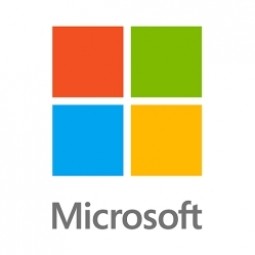下载PDF
Improve the Efficiency and Safety of Liposuction with Data Analysis

技术
- 分析与建模 - 机器学习
- 分析与建模 - 实时分析
- 应用基础设施与中间件 - 数据交换与集成
- 传感器 - 尺寸和位移传感器
适用行业
- 医疗保健和医院
适用功能
- 商业运营
挑战
吸脂术是一种用套管去除人体脂肪的手术,套管是一种可以插入体内的管子。提取脂肪是一个非常复杂的手术过程。套管应该精确地到达皮肤和肌肉之间的脂肪组织。当套管被注入更深的问题时,它可能会损害肌肉问题。如果插管插入不够,脂肪可能会不均匀地去除或导致皮肤坏死。外科医生的敏锐感觉当然很重要。
每次手术会发生 12,000 至 20,000 次注射套管和提取脂肪。这意味着及时均匀地移动套管是至关重要的。然而,每个患者都有不同类型的脂肪组织和手术部位。由于手术的复杂性,具有丰富经验的熟练外科医生受到青睐。
客户
365mc
关于客户
365mc 和 Lypsosuction 诊所
解决方案
365mc 打造了“MAIL System(动作捕捉和人工智能辅助吸脂系统)”,将吸脂与人工智能技术相结合。核心技术是在抽脂过程中捕捉外科医生手的运动,方法是在引流脂肪的套管中安装传感器。 Microsoft Azure IoT 解决方案加速器收集数据,然后 Microsoft Azure 机器学习对其进行分析。 365mc 通过该系统显着提高了吸脂的准确性和安全性。
365mc 使用具有运动识别传感器的特殊套管。该传感器在吸脂过程中实时读取外科医生手部的活动。 365mc与KETI(韩国电子技术研究所)合作开发了具有高灵敏度和精度的专用传感器。
收集的数据
Motion Recognition , Surgery Data
运营影响
相关案例.

Case Study
Hospital Inventory Management
The hospital supply chain team is responsible for ensuring that the right medical supplies are readily available to clinicians when and where needed, and to do so in the most efficient manner possible. However, many of the systems and processes in use at the cancer center for supply chain management were not best suited to support these goals. Barcoding technology, a commonly used method for inventory management of medical supplies, is labor intensive, time consuming, does not provide real-time visibility into inventory levels and can be prone to error. Consequently, the lack of accurate and real-time visibility into inventory levels across multiple supply rooms in multiple hospital facilities creates additional inefficiency in the system causing over-ordering, hoarding, and wasted supplies. Other sources of waste and cost were also identified as candidates for improvement. Existing systems and processes did not provide adequate security for high-cost inventory within the hospital, which was another driver of cost. A lack of visibility into expiration dates for supplies resulted in supplies being wasted due to past expiry dates. Storage of supplies was also a key consideration given the location of the cancer center’s facilities in a dense urban setting, where space is always at a premium. In order to address the challenges outlined above, the hospital sought a solution that would provide real-time inventory information with high levels of accuracy, reduce the level of manual effort required and enable data driven decision making to ensure that the right supplies were readily available to clinicians in the right location at the right time.

Case Study
Gas Pipeline Monitoring System for Hospitals
This system integrator focuses on providing centralized gas pipeline monitoring systems for hospitals. The service they provide makes it possible for hospitals to reduce both maintenance and labor costs. Since hospitals may not have an existing network suitable for this type of system, GPRS communication provides an easy and ready-to-use solution for remote, distributed monitoring systems System Requirements - GPRS communication - Seamless connection with SCADA software - Simple, front-end control capability - Expandable I/O channels - Combine AI, DI, and DO channels

Case Study
Driving Digital Transformations for Vitro Diagnostic Medical Devices
Diagnostic devices play a vital role in helping to improve healthcare delivery. In fact, an estimated 60 percent of the world’s medical decisions are made with support from in vitrodiagnostics (IVD) solutions, such as those provided by Roche Diagnostics, an industry leader. As the demand for medical diagnostic services grows rapidly in hospitals and clinics across China, so does the market for IVD solutions. In addition, the typically high cost of these diagnostic devices means that comprehensive post-sales services are needed. Wanteed to improve three portions of thr IVD:1. Remotely monitor and manage IVD devices as fixed assets.2. Optimizing device availability with predictive maintenance.3. Recommending the best IVD solution for a customer’s needs.

Case Study
HaemoCloud Global Blood Management System
1) Deliver a connected digital product system to protect and increase the differentiated value of Haemonetics blood and plasma solutions. 2) Improve patient outcomes by increasing the efficiency of blood supply flows. 3) Navigate and satisfy a complex web of global regulatory compliance requirements. 4) Reduce costly and labor-intensive maintenance procedures.

Case Study
Harnessing real-time data to give a holistic picture of patient health
Every day, vast quantities of data are collected about patients as they pass through health service organizations—from operational data such as treatment history and medications to physiological data captured by medical devices. The insights hidden within this treasure trove of data can be used to support more personalized treatments, more accurate diagnosis and more advanced preparative care. But since the information is generated faster than most organizations can consume it, unlocking the power of this big data can be a struggle. This type of predictive approach not only improves patient care—it also helps to reduce costs, because in the healthcare industry, prevention is almost always more cost-effective than treatment. However, collecting, analyzing and presenting these data-streams in a way that clinicians can easily understand can pose a significant technical challenge.






